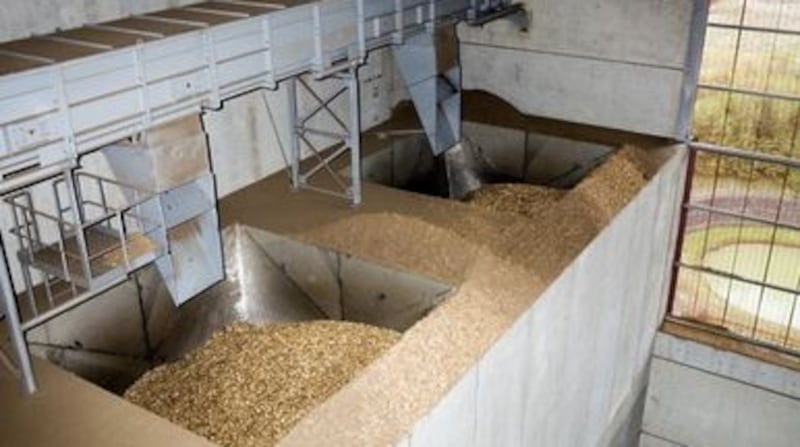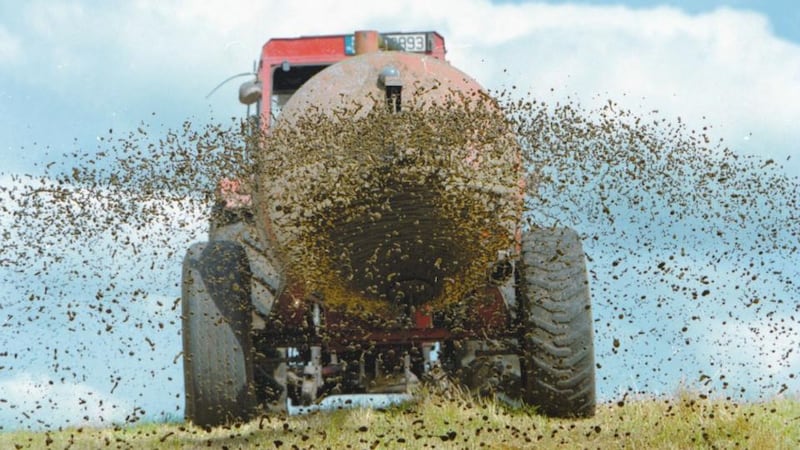What hope there is for politics in Northern Ireland this year is premised on a resolution to the Renewable Heat Incentive (RHI) scandal, officially the reason Stormont collapsed.
The RHI inquiry is due to report in April. Its chairman, Patrick Coghlin, has promised detailed recommendations, delivering a template to rebuild devolution that could meet Sinn Féin’s test of “no return to the status quo”.
Rumours are circulating that DUP leader Arlene Foster will stand down ahead of the report, clearing the way for a less antagonistic successor. That would set the stage for a restoration of Stormont by the August statutory deadline for talks.
But looming over this prospect is another green energy scandal uncannily similar to RHI, only worse.
Last November BBC Radio 4 broadcast an investigation by news website SourceMaterial into a UK-wide biogas subsidy scheme, alleging unique Stormont mismanagement.
Northern Ireland is a centre of poultry rearing and processing, with ambitious plans for the industry to grow. But safely disposing of nitrate-rich poultry waste is a major environmental issue, as well as a legal requirement under EU directives.
In 2010 the industry’s preferred disposal option – building one huge waste-to-electricity incinerator – fell victim to the usual Nimby objections.
Ammonia-polluted land looks healthy for a while as grass flourishes while everything else dies
So the plan was switched to disposal by anaerobic digesters, taking advantage of a 20-year subsidy for the biogas they produce, funded from a levy on electricity bills. In 2011 Stormont increased this subsidy to four times the UK level. By 2013 it had set up a dedicated planning team to meet industry demands, with a second team later established inside the Department of Agriculture. Ministers also approved a loan scheme on top of the subsidy. By 2015, as the rest of the UK was winding down anaerobic digestion, Stormont was licensing it to dispose of 130,000 tonnes of chicken litter per year. Venture capital firms from London piled in to lend farmers the typical £2 million cost of building digesters, attracted by subsidised incomes of £800,000 a year. As of last year, 89 such plants had been built, most of a fairly large 500kW capacity.

The catch
There was just one problem: anaerobic digestion, unlike incineration, does not remove ammonia from poultry waste. Ammonia, the main concern in nitrate pollution, is fully retained in the slurry left over from digestion, which is spread on farmland and so continues to build up in the environment.
Northern Ireland now has the worst ammonia pollution in Britain and Ireland, accounting for 12 per cent of total UK emissions. The consequences are serious and sinister: ammonia-polluted land looks healthy for a while as grass flourishes while everything else dies. In an unfortunate political metaphor, the North is getting greener as a prelude to disaster.
Both parties could play the scandals off against each other to reach an unofficial truce and they would probably be inclined to do so
The problems of nitrate pollution in water are well known. Less appreciated is how toxic ammonia is in the air, where it combines with other pollutants to form dangerous particulates.
The uselessness of anaerobic digestion in tackling the problem it was meant to solve was known all along to the poultry industry, as it conceded in its initial plan for an incinerator. Stormont also appears to have known – the SourceMaterial investigation alleges attempts to reclassify waste processes to get around EU directives.

Catchy title
So far this scandal lacks a title as attention-grabbing as RHI’s “cash for ash”. Perhaps “bung for dung” or “hurry for slurry” will catch on. What it does have is a central failing as ludicrous and easy to grasp as RHI’s subsidy for heating empty barns. It features a comparable waste of money by a similar cast of public and private bodies, along with a promise of further surprises. Allegations have been made of lax oversight, mis-selling of loans, gaming the system and subsidies to non-existent facilities.
So far the only reason this has not turned into RHI 2 is the incapacity of the media and public to absorb it, given everything else that is going on. It took a report by the Northern Ireland Audit Office and persistence by Belfast’s newspapers and broadcasters to put RHI on the agenda, plus belligerence by Foster to turn it into a Stormont-killing crisis.
The Audit Office is to launch an investigation into the biogas scheme next month, and Stormont officials have referred it to UK energy regulator Ofgem, itself in the frame for mishandling RHI. The media in Belfast continues to chip away at the story.
The biogas scheme was mainly implemented under Sinn Féin ministers, including current Sinn Féin deputy leader Michelle O’Neill. However, DUP ministers were also involved. Both parties could play the scandals off against each other to reach an unofficial truce and they would probably be inclined to do so, but if the story takes off, that option could slip out of their control.
The paradox is that if politics calms down enough for RHI 2 to grab the spotlight, it could blow things up all over again.












